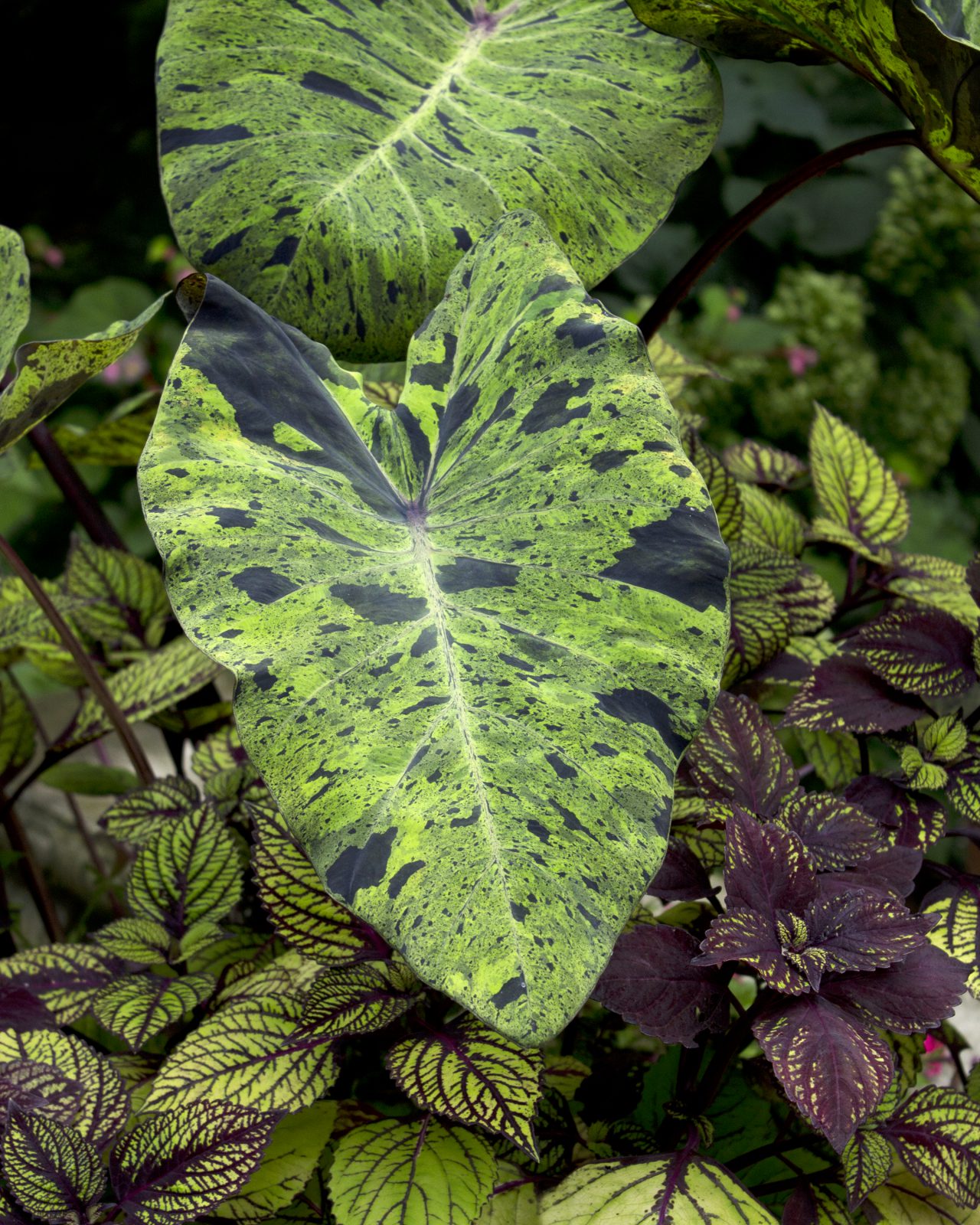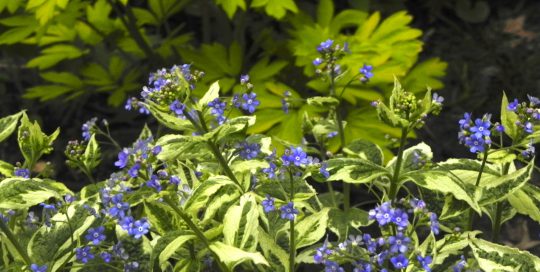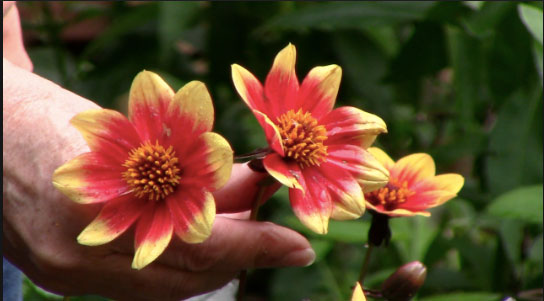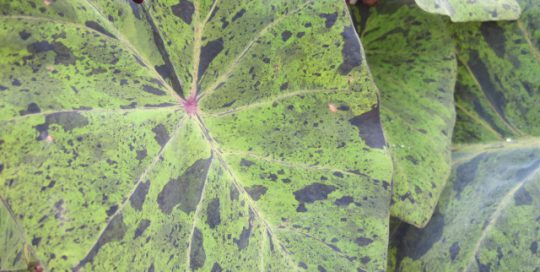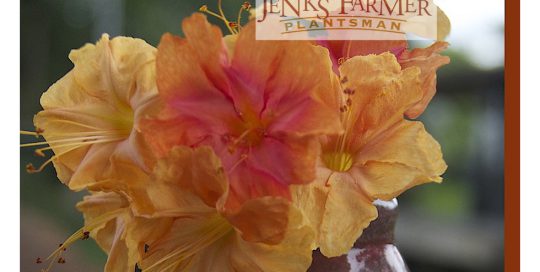Gardeners from Syracuse to St. Paul have developed a taste for the tropics. Garden centers are answering the demand with more and more long-term heat-lovers like gingers, canna, bird of paradise, and of course, elephant ears. Adding a few of these leafy marvels can make a big statement in your garden. Use elephant ears for mid-summer foliage because they perfectly fit late July’s heat and humidity. They will fill the time period when blooming annuals are taking a breather and the mums and asters are gearing up for their fall show.
The term, ‘elephant ears’ is a umbrella under which literally thousands of plants with leaves shaped like elephant ears may fit. You can, of course, refer to them by that term, but it’s best to know their real names. This article focuses on three plants: Alocasia, Colocasia and Xanthosoma. All originated in jungle climates, so they love heat and humidity. These conditions are becoming more common in many parts of the U.S.A. All three plants are members of the Aroid family along with Callas and Philodendron.
Alocasia and Colocasia are naturally found in tropical parts of Asia. Hybridizers have been selecting and crossing these species resulting in varieties with leaves that are variegated and with ruffled edges. These hybrids can either be compact or giant in stature.
My favorite elephant ears variety is Colocasia
The easiest to find elephant ears at most garden centers is Colocasia (pronounced kol-uh-KAY-zee-uh). It’s been used for thousands of years for its edible fleshy root. Patience is a most important virtue if you start the plant from a root. After planting, it can take anywhere from two to eight weeks to sprout, depending on light and warmth. Luckily, you can find it already growing at garden centers, even as late as July.
I planted my first Colocasia plant in the ground. I selected a spot where it received sun from morning until just after noon. It was a spindly-stemmed plant with wimpy leaves in early June. By late July it became a four-foot mass of gorgeous bright green. The variety was ‘Elena’, which is touted as a more winter hardy alternative to Xanthosoma ‘Lime Zinger’.
You can grow colocasia indoors or outdoors
Another variety I never tire of is Colocasia ‘Mojito’. Its bright green leaves are unevenly speckled with a purple so deep it almost looks black. Leaves typically grow about 18” long by 10” wide. The plant tops out around three feet tall. While the fashion police might cringe, I can’t resist pairing it with Coleus ‘Fishnet Stockings’. That’s a foliage plant with the same bright green and purple as the leaves on the Colocasia.
